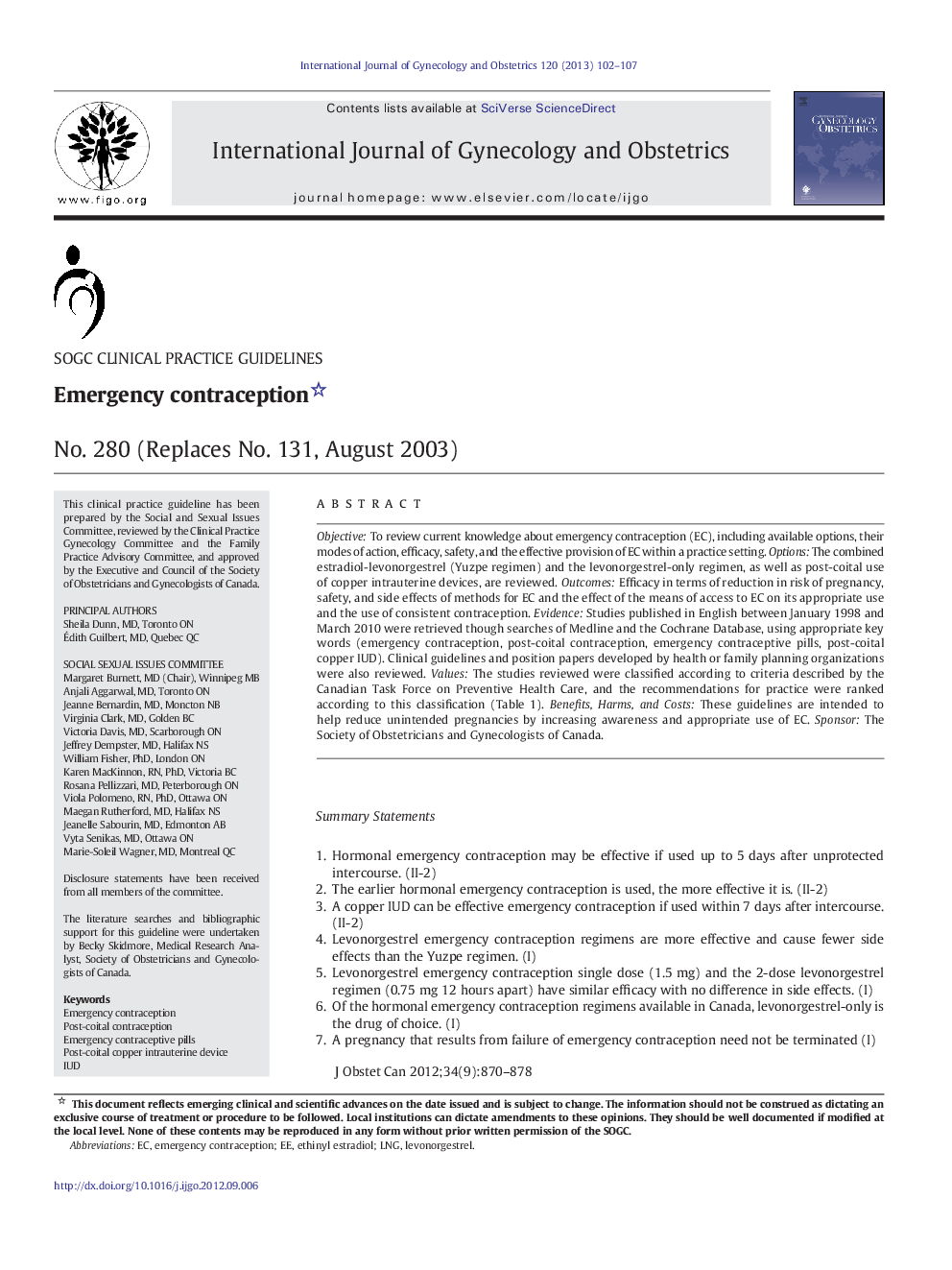| Article ID | Journal | Published Year | Pages | File Type |
|---|---|---|---|---|
| 3953288 | International Journal of Gynecology & Obstetrics | 2013 | 6 Pages |
ObjectiveTo review current knowledge about emergency contraception (EC), including available options, their modes of action, efficacy, safety, and the effective provision of EC within a practice setting.OptionsThe combined estradiol-levonorgestrel (Yuzpe regimen) and the levonorgestrel-only regimen, as well as post-coital use of copper intrauterine devices, are reviewed.OutcomesEfficacy in terms of reduction in risk of pregnancy, safety, and side effects of methods for EC and the effect of the means of access to EC on its appropriate use and the use of consistent contraception.EvidenceStudies published in English between January 1998 and March 2010 were retrieved though searches of Medline and the Cochrane Database, using appropriate key words (emergency contraception, post-coital contraception, emergency contraceptive pills, post-coital copper IUD). Clinical guidelines and position papers developed by health or family planning organizations were also reviewed.ValuesThe studies reviewed were classified according to criteria described by the Canadian Task Force on Preventive Health Care, and the recommendations for practice were ranked according to this classification (Table 1).Benefits, Harms, and CostsThese guidelines are intended to help reduce unintended pregnancies by increasing awareness and appropriate use of EC.SponsorThe Society of Obstetricians and Gynecologists of Canada.
